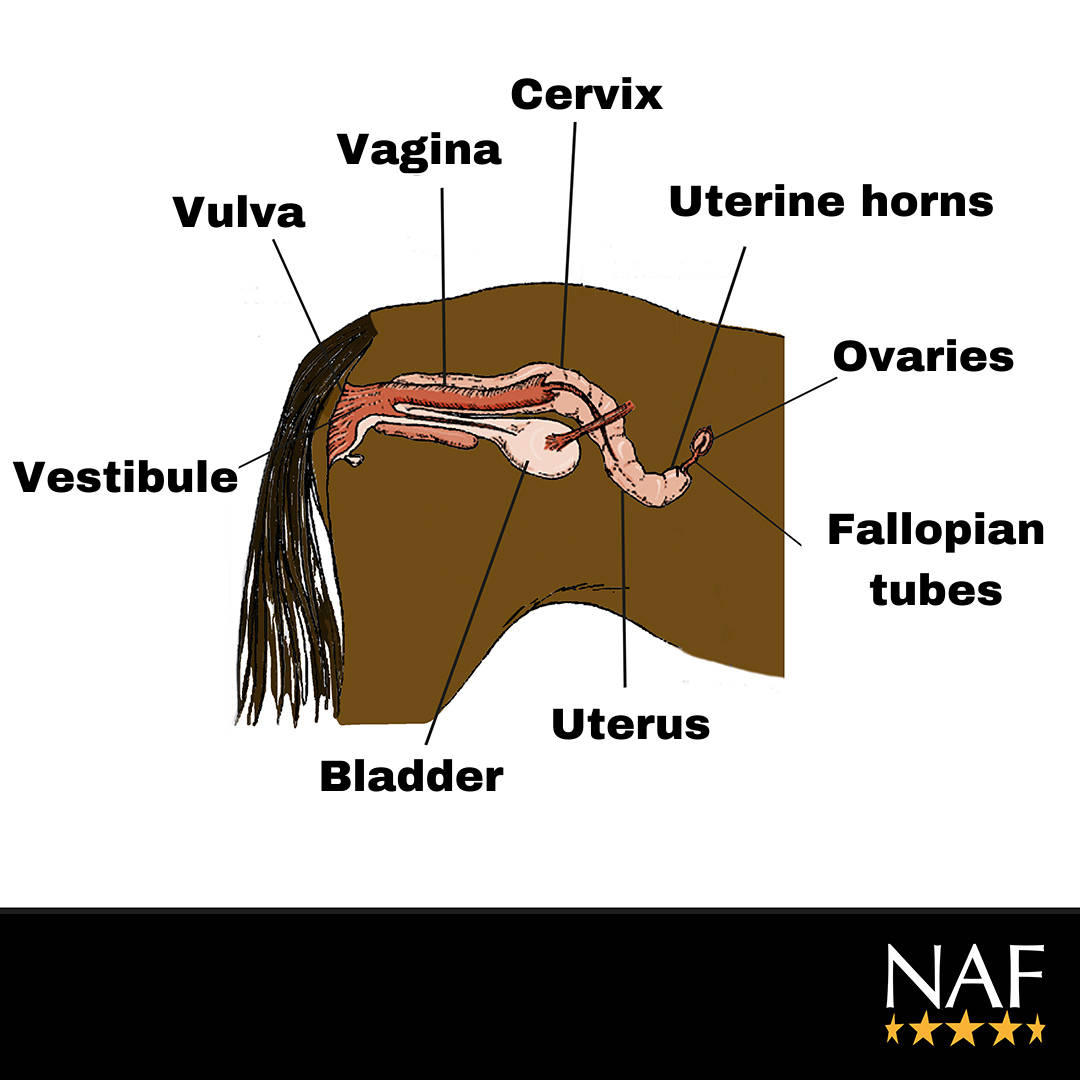Working with mares can be very rewarding, but the hormonal cycle can sometimes make training a little more, especially when they are supposed to be in top shape. Bucking, kicking, biting and refusing to go forward can make riding difficult and clearly affect our competition results; but why are mares so difficult and why do they show these signs of discomfort?
Hormones and herd dynamics
The first thing to realise is that mares, like stallions, have a complete and intact reproductive system, with all its hormonal consequences. Stallions can be expected to be riled up from time to time, but the same can be true of mares. In the wild, the head of the herd is often an older mare, called the 'alpha mare', who can assert her dominance even though she is not as strong as the stallion. This alpha position can be smoothly taken over by other alpha mares in the herd. For example, there may be an alpha mare for feeding and drinking and another alpha mare for leading the herd.
Alpha mare
If your mare is such an alpha mare you are probably familiar with the challenges this brings. However, with the lows come the highs. It is said that mares are less likely to bond with their owner or rider, but when that bond is formed you are a fantastic combination. Mares can be determined, quick-thinking and willing to take charge - all of which make her a great partner. If you are lucky enough to own a mare, it is important to work with her, as going against her will will not get you anywhere.
The hormonal cycle
The mare's hormonal cycle often follows a fixed pattern from March to about October, although this can vary from mare to mare and the degree of behavioural change is also different from individual to individual. Where some mares hardly show any signs of being in heat, others seem to be constantly in heat. In addition, not all mares have a regular cycle, making it difficult to see the changes coming, which can have a detrimental effect on sporting performance. For the mare, the challenges of being in heat are also magnified by her anatomy.

As you can see in this image, the mare's ovaries lie just behind the saddle and it is common to see signs of discomfort when pressure, or even just touch, is applied around this area. For example, tail swishing or a sensitive reaction when brushing the loins can indicate cramping and muscle tension in this area. This affects the ability to use the hindquarters and to bend in correctly. This can be a particular problem in dressage and showjumping because in these disciplines, the use of the hindquarters is essential. Therefore, supporting your mare's comfort can make a big difference in her performance throughout her cycles.
Support during the heat period
Unfortunately for us, the breeding period coincides almost perfectly with the outdoor competition season as the cycle is stimulated by the lengthening of the days. Fortunately, there are a number of ways in which you can support your mare in a friendly manner.
Try to keep your mare in a stable herd. Changes in the group can cause unrest and change the mare's status within the group, which can cause stress. Make sure that to offer your mare a natural high fibre diet that is low in starch, as a lot of starch can worsen undesirable behaviour. Also make sure that your mare keeps a good body score and does not get too fat. This is because being overweight can prolong periods of being in heat, and research has shown that dominant horses often have higher body scores. It is not clear whether dominance causes the overweight, but every horse should be at a healthy weight, including mares. In addition to the general management of the horse, specific nutrition for mares is also advised.
Magnesium and natural herbs
Magnesium is widely used as a general support for mares' well-being because it helps relax muscles. However, magnesium rarely works alone, so look for a nutritional supplement that combines magnesium with natural herbal elements for hormonal balance.
An interesting fact about herbs is that their names often refer to the effect they have. For example, Vitex Agnus Castus is also known as Monk's Pepper. This used to be used in monasteries to help monks stay focused and not get distracted by less moral activities! Not only is this herb effective with monks, it can also be applied to our mares. Being in heat increase libido because they are a preparation for reproduction, which is often reflected in flirtatious behaviour. Think of distractions during training, frequent urination, squeaking or separation anxiety. Monk's Pepper, also referred to as 'chaste berry', helps the mare to remain 'pure and chaste' and focused. It works well in synergy with herbs such as guelder rose (crampbark), an herb traditionally used to give comfort to women during their oestrogen cycle.
Ultimately, we must respect the fact that the hormonal cycle is a natural feature of our mares, but every mare owner knows that she can have more highs than lows. With good management and targeted nutrition, we can work with our mares to keep them focused and comfortable.
NAF Oestress
But there is another miracle drug that provides optimal support for your mare:
NAF Oestress! It helps your mare to deal naturally with the cause of mood swings during her cycle. The unique composition of Oestress nurishes the mare with extracts from vegetable ingredients that have been used for hundreds of years to support the hormone balance. By supporting hormone levels naturally, she will be more inclined to relax and comfortably concentrate on her work. Oestress also contains magnesium to support anxiety and muscle tension. Finally, Oestress is rich in antioxidants to support the elimination of waste products.
NAF Oestress in available in both
liquid or
powder form.